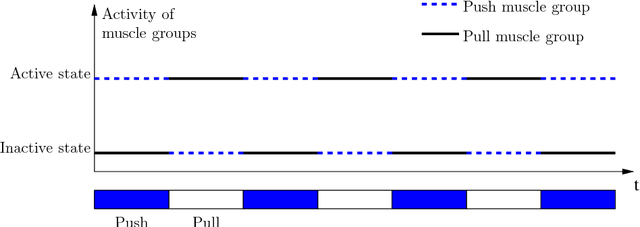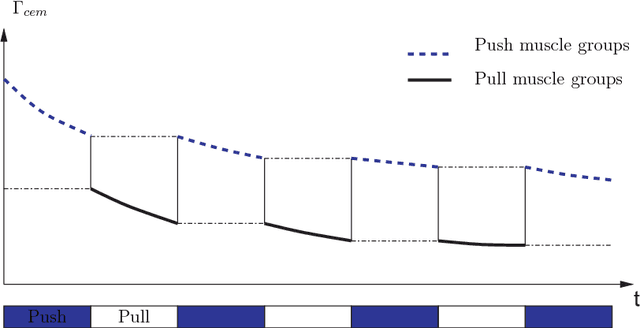Predictive model of the human muscle fatigue: application to repetitive push-pull tasks with light external load
Paper and Code
Mar 22, 2015



Repetitive tasks in industrial works may contribute to health problems among operators, such as musculo-skeletal disorders, in part due to insufficient control of muscle fatigue. In this paper, a predictive model of fatigue is proposed for repetitive push/pull operations. Assumptions generally accepted in the literature are first explicitly set in this framework. Then, an earlier static fatigue model is recalled and extended to quasi-static situations. Specifically, the maximal torque that can be generated at a joint is not considered as constant, but instead varies over time accordingly to the operator's changing posture. The fatigue model is implemented with this new consideration and evaluated in a simulation of push/pull operation. Reference to this paper should be made as follows: Sakka, S., Chablat, D., Ma, R. and Bennis, F. (2015) 'Predictive model of the human muscle fatigue: application to repetitive push-pull tasks with light external load', Int.
 Add to Chrome
Add to Chrome Add to Firefox
Add to Firefox Add to Edge
Add to Edge